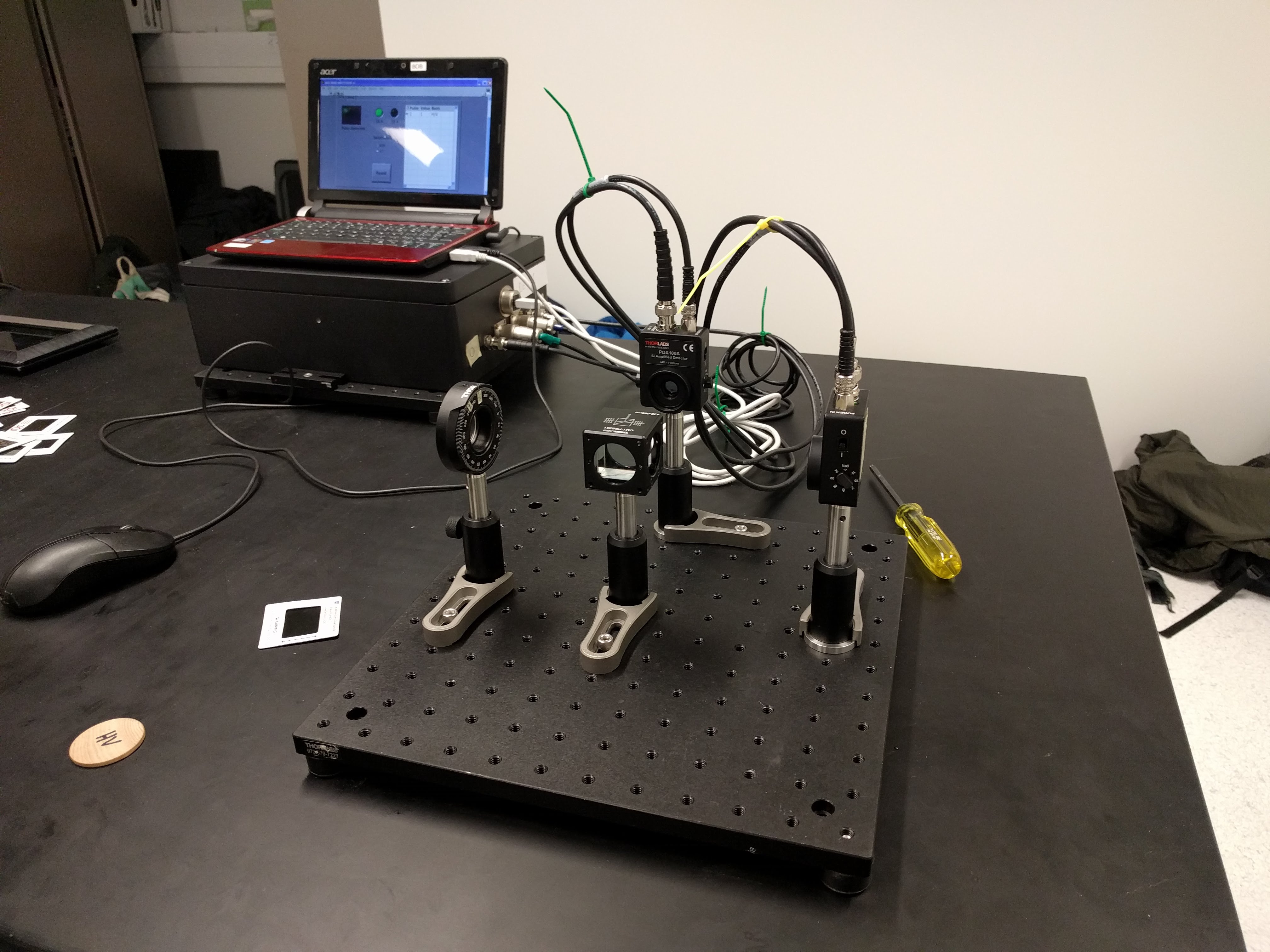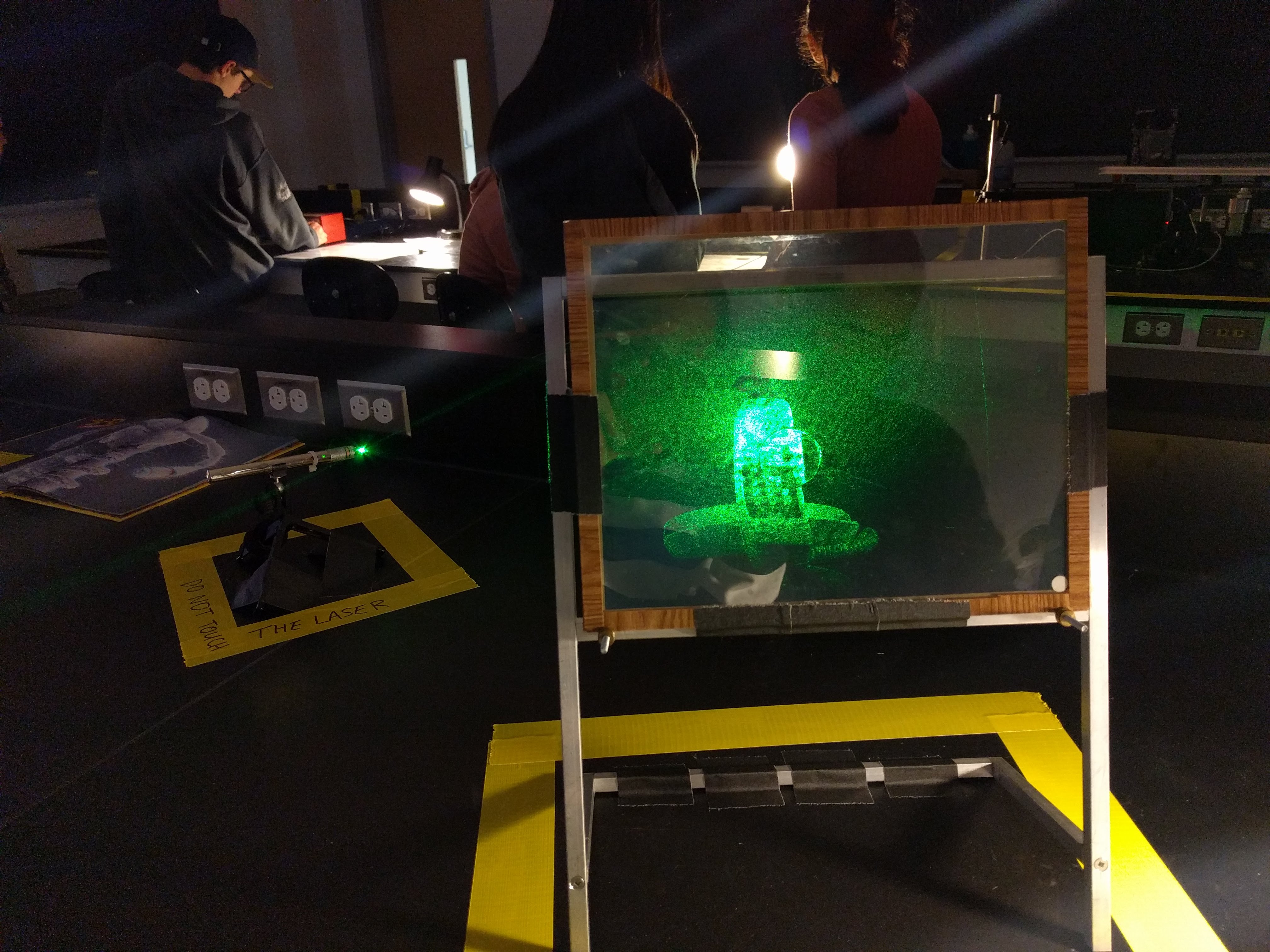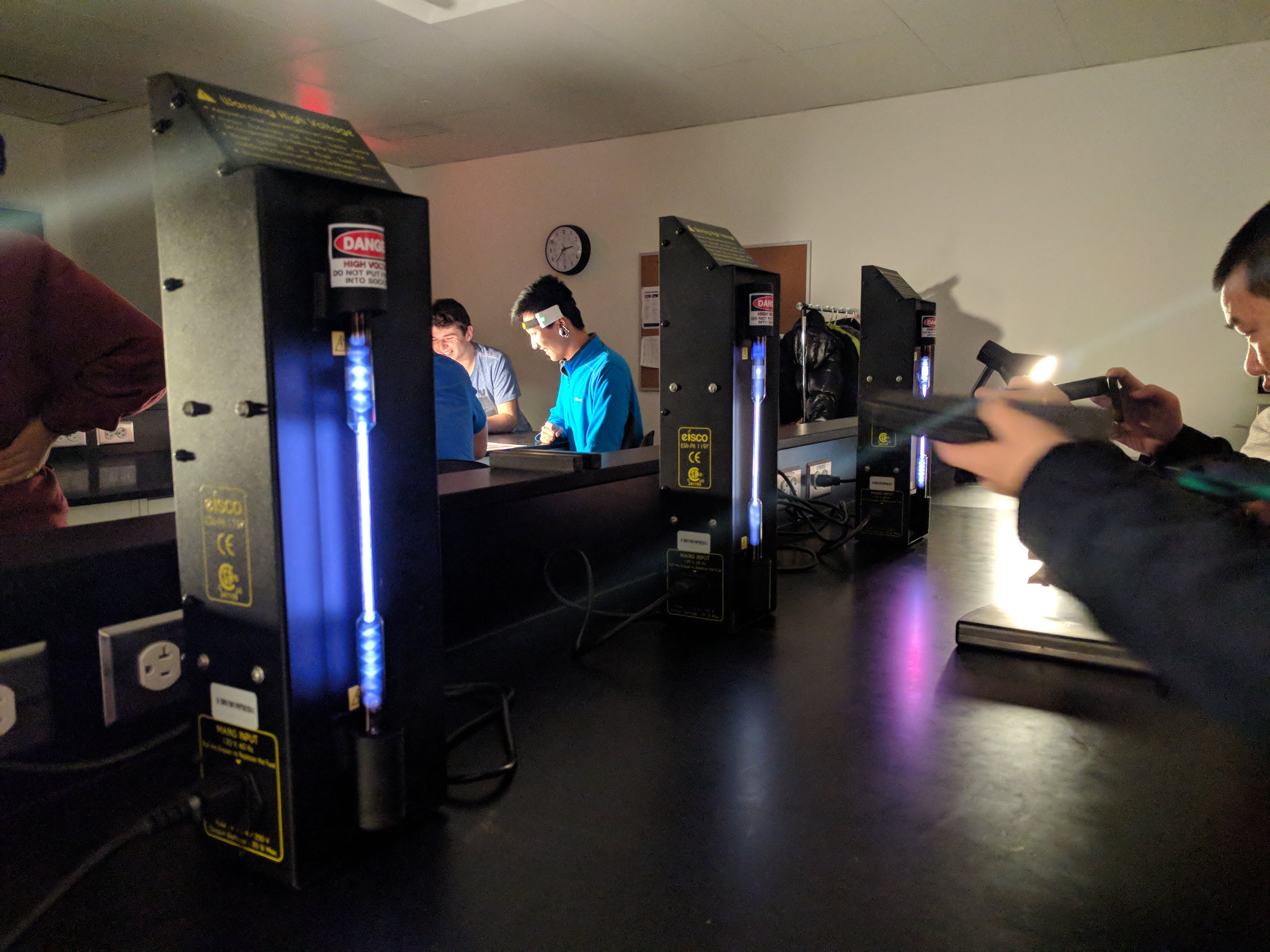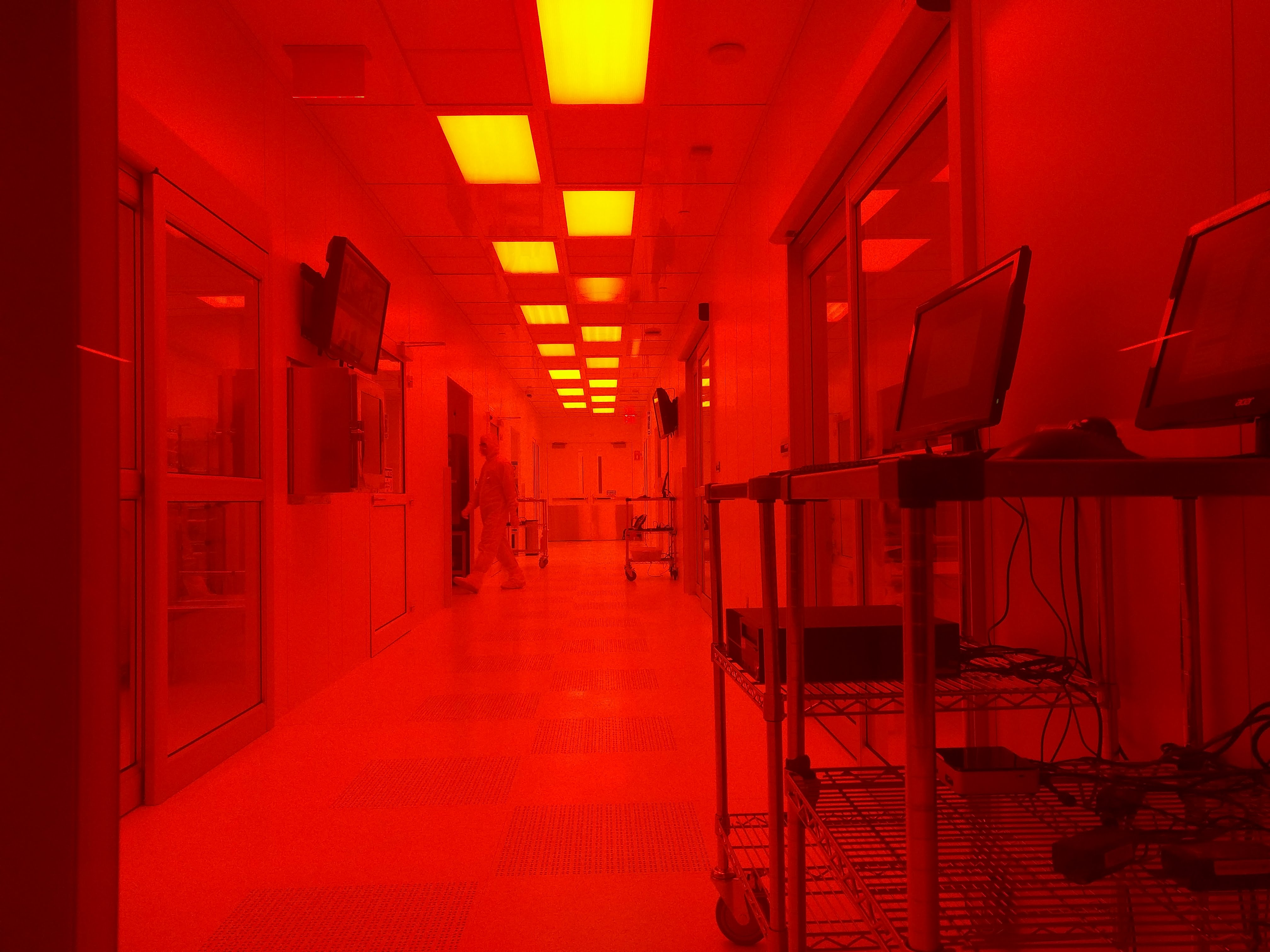Waterloo Science Day
Today we had an exciting trip to the University of Waterloo where we participated in various labs and workshops. I did one at the Institue of Quantum Computing and one for physics.
Today I learned:
IQC (Morning)
In the Institute for Quantum Computing, we were first given a brief overview of how quantum particles defy other laws. After wards, we used laser light to simulate the quantum particles and use them to create quantum encryptions from which we could send secret messages.
Things I learned:
- Quantum particles can be either (vertical or horizontal) or (diagonal or anti-diagonal). When passed through a filter, if a particle type is passed through a an opposite type filter, it will will have it’s own state, but it will tell the filter is is of a random type. e.g. Vertical particles pass through a diagonal filter. It will tell the filter either vertical or horizontal, but it’s state is vertical.
- Quantum particles and their decisions allow for true randomness.
- Quantum computers could have massive computing power. Imagine a today’s computer the size of the observable universe and its processing power, fitting into the size of today’s laptop.
- Using this randomness, we can create truly random keys of large length, and pass them through filters at the sending and receiving end. Using the keys, we can encrypt messages. This is quantum cryptography, and it could be what the future holds.

This is the receiving part of the quantum encryptor, plus a computer to record the pulses of 1s and 0s
Waterloo Science Lab (Physics) (Afternoon)
There were six stations where we were exposed to the tip of the iceberg on many physics concepts.
**Liquid Nitrogen and Superconductors: **
This involved a magnet racing around a magnetic track. The magnet, orginally was not levitating. But when liquid nitrogen was added to the superconductor magnet at -200 degrees C, it levitated and with a simple push, kept going around the track (almost frictionless in the air). There was also a superconductor where we suspended a magnet above it. With a simple push, the magnet kept spinning. This was the coolest station of them all. It also has many applications, from an energy-less motor spinning, to a magnetic levitation train.
The superconductor magnet goes around the track with almost no friction
**Holograms: **
Using a laser and a glass plate, an 3d model was projected onto a 2d surface. This was more interesting than just a general 2d image. When viewed through a small peephole, one could move around the peephole and see the entire image. But more fascinating was that one could move one’s head around a fixed peephole anywhere on the glass plate, and the entire image would be visible too. This means that on every area of every possible section of the plate there is data about the entire image.

Every part of the image contains data about every part of the image
**Centrifugal Gravity: **
Gravity is a downwards force… or is it? When we hold a bendy object in the middle, the two sides fall downwards. But when we put it in very fast spinner, the sides bend towards the outside. This means, we can create artificial gravity with a centrifugal force. Perhaps useful for outer space.
**Concentration Games: **
This game involved sensors which were attatched to our head and measured our concentration level. There was a ball, and whoever could get the ball to the other side based on their concentration could win. The sensor measured brain activity to move the ball, and this is a step towards mind reading.
**Continuous and Discrete Spectrums: **
This explained the light spectrums when viewing from a quadrilateral shaped device. Looking at white light, there is a full continuous spectrum. But looking at the light emitted from various gasses, there are only a few spots of color and it is a discrete spectrum.

We looked for the spectrum of light emitted from these gases
**Electric Field and LEDs: **
We turned on an LED with only an electric field. If you stand with the legs of the LED facing the electric field, the electrons emitted will power up the LED. All you have to do is hold it.
At the end, there was a fascinating discussion where we (and the professor) discussed the potential applications for each of the concepts at each station. We also learned about gravity, and how the theory we have been learning all along is wrong. The example demonstrated to us was an accelerometer that measured instantaneous accleration. When getting faster to the right, the lights would show up on the right. When getting faster to the left, the lights would turn on on the left. But the most exciting thing was when he turned the accelerometer on its side - the lights were now pointing up and down. When he held the accelerometer still, the lights were on in the upwards direction, signifying accleration was in the upwards direction. This blew my mind away, and raised a lot of questions about how we perceive the world today. Apparently it was Einstein that first came up with this theory, and today it is the most accepted theory of how gravity works.
Today I wondered:
We are creating quantum computers with extraodinary power to encrypt and send our messages completely safely. But what about all the computers and sensitive data that we have today? What will happen to all the important messages today? With a quantum computer, all of the current security is rendered useless. As well, the super powered computer used to encrypt messages can be used to crack the messages, so this is another problem. How can we advance the safeguarding technology while not advancing the counteracting technology?
If gravity is actually an upwards acceleration force, then are we drawing all our FBD diagrams wrong? It would mean that when an object is at rest, it actually only has one force: the upwards gravitational force. When an object is in free fall, there are actually no forces acting on it. This would totally change how we interpret this force of gravity and representing it in diagrams.
Today I had an intriguing idea:
Today was an ye-opening day, and I learned a lot. Yet, I did not learn a lot. It was only the ‘tip of the iceberg’. Physics is a very wide subject, and has applications everywhere. Perhaps in the future, we will find something that is currently thought to be impossible to be true: for example, maybe we’re not dealing with friction. We’re dealing with something else.
Aside
1
This morning, I took the school bus from home to school. Then, I took another bus from the school to the university, which passed very close to my home. Then on the way home, the bus also passed close to home. Lastly, I carpooled with friends to get home. This was slightly inefficient.
2
This is a nanotechnolgy lab. It is built on a separate foundation designed to resist earthquakes and any miniscule movement. It has orange glass to stop harmful light from going out.

After Unit Reflection
This post connects to requirement #2. This whole day was quite interesting, and there were a lot of applications for the technologies and concepts that we learned about today. The most interesting ones to me were probably the ones for quantum computing, which uses the energies of quantum particles. These can be used to encrypt messages, and could also provide an enormous amount of computing power for the world. The other one is the liquid nitrogen car, which takes away thermal energy from the magnet in order for it to work. The electromagnetivity of the magnet could possibly be used to power maglev trains cheaply, and this would reduce transportation costs.